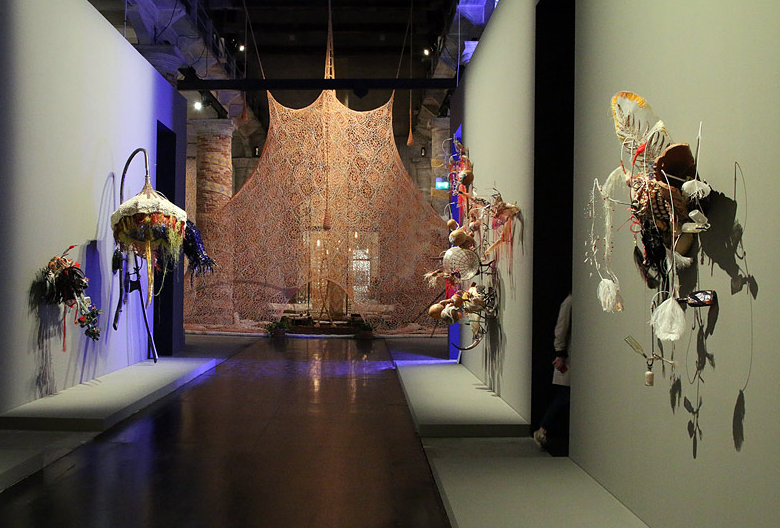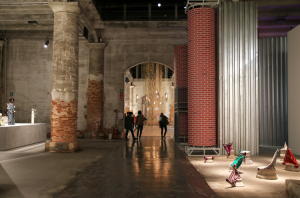Viva arte viva: a biennale for an outdated future?

“For me the worst thing would be indifference”, said Christine Macel, director of the 57th Venice Biennale, in an interview with New York Times’ Rachel Donadio. Viva Arte Viva is the theme for this year’s Biennale and presents a passionate outcry for the value of artists and art work. Paolo Baratta, the President of ‘La Biennale di Venezia’ deconstructs this exclamation explaining that,
“this year’s Biennale Arte is dedicated to celebrating… the very existence of art and artists, whose worlds expand our perspective and the space of our existence. Christine Macel has called it an Exhibition inspired by humanism. This type of humanism is neither focused on an artistic ideal to follow nor is it characterized by the celebration of mankind as beings who can dominate their surroundings. If anything, this humanism, through art, celebrates mankind’s ability to avoid being dominated by the powers governing world affairs.”
ABOVE, LEFT & RIGHT: VIEW OF THE ARSENALE PHOTO CREDIT: © HAUPT & BINDER
In Macel’s Biennale, artists are championed as leaders promoting the dispersal of ethical ideals and contemporary values of inclusivity and endurance. Clearly, this optimism starkly contrasts the tone of the 56th Biennale’s apocalyptic ‘age of anxiety’ theme demonstrating a new emphasis on rebuilding communality by means of artistic thought and labour.
Macel wants to celebrate art’s role in the socio-cultural hierarchy as the ultimate space for reflection, individual expression, and exploration of both dreams and utopias. This coming from an institution that is meant to be both representative and contemporary, seemed like an ambitious endeavour but as I digested these concepts, I became sceptical.
Why is Macel philosophizing the role of art and connecting it to an outdated and essentially un-inclusive concept of humanism, when her overall goal is to promote communal action and move away from the personal interest and autonomy that humanism stands for?
Macel explains in various interviews that art should be used as a tool to seek out alternative methods for ‘peaceful coexistence’. But if these alternatives are founded in old-world humanism, that excludes and ignores socio-cultural diversity, then how can an outdated ideology define a peaceful future world? Despite this double standard, what alarmed me was the disconnect between the critical thematic tensions of her neo-humanist argument and substantive or relevant political comment. Further, the lack of diversity amongst the 120 artists selected for the main curated exhibition was not surprising and somewhat upsetting: the gender parity was bad and racial metrics even worse with only five black artists selected.
IP.
This article was previously published on Impakter Magazine to read in full please click here: http://impakter.com/viva-arte-viva-biennale-outdated-future/

ABOVE: IN THE PAVILLION OF THE COMMONS. PHOTO CREDIT: © HAUPT & BINDER


